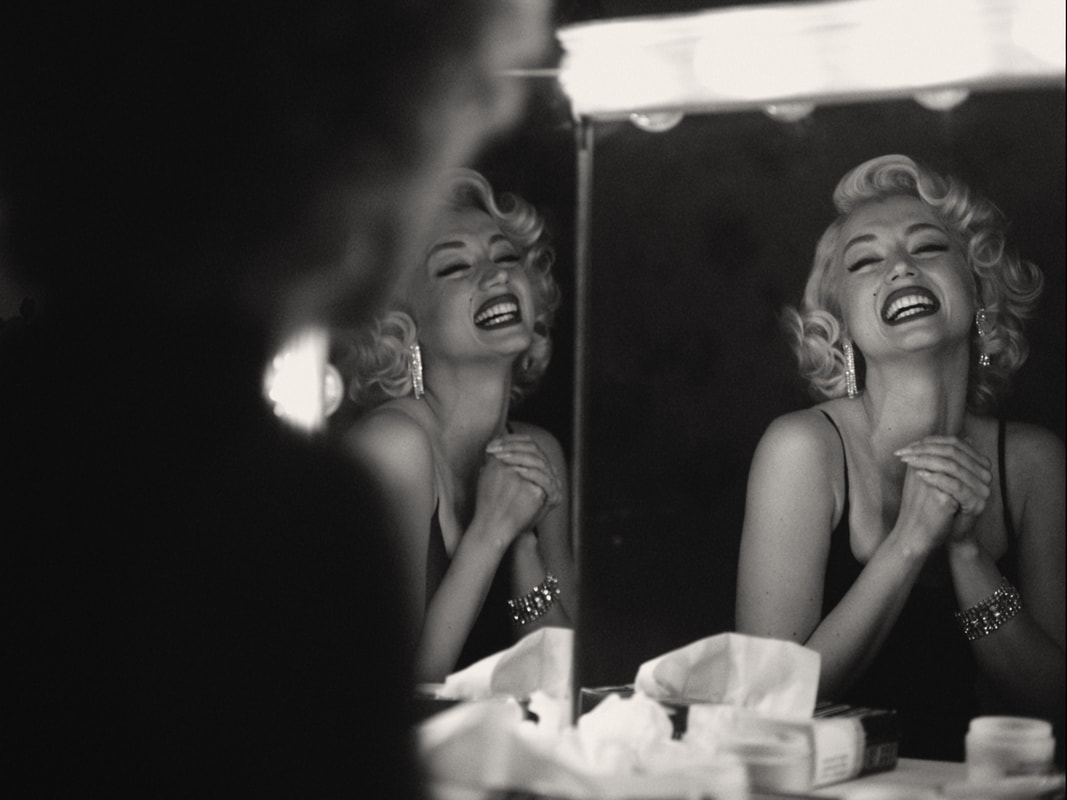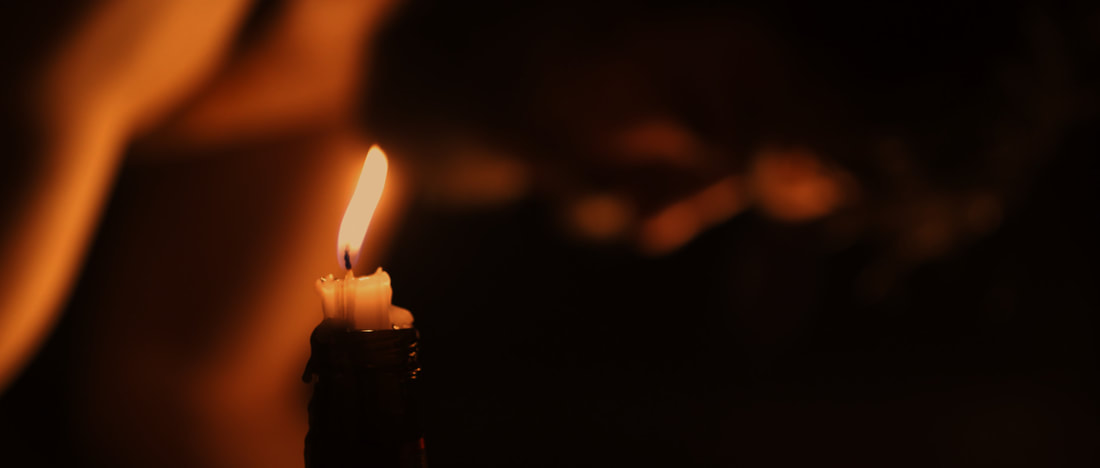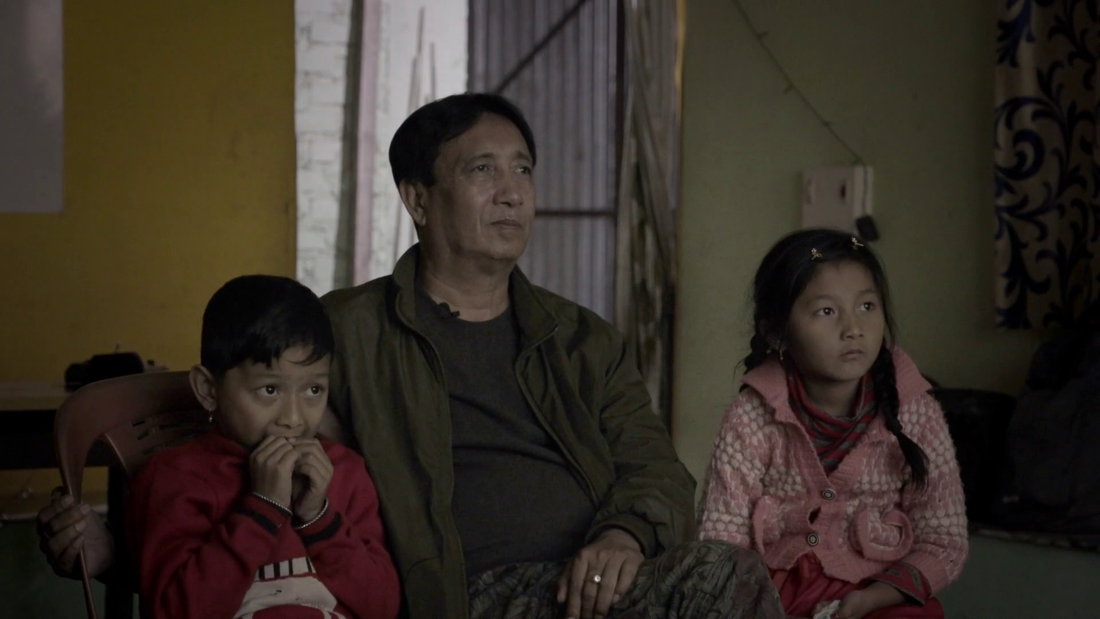|
Content / trigger warning: Blonde contains flashing and strobing effect imagery that may be triggering to those with photosensitivity. Blonde is rated NC-17 for some sexual content. It contains frightening and intense images involving abuse, assault, and abortion. These topics are briefly discussed in the review below. Blonde isn’t the feel-good biopic you’re looking for. Nor is it a sentimental tear-jerker. Andrew Dominik’s 2-hour and 46-minute adaptation of the Joyce Carol Oates novel is difficult, depressing, and demanding. It’s the kind of movie that made me tell my parents, “Don’t watch it, you won’t like it” (although the MPAA rating alone would have been enough to turn them away). But as I watched, I also felt that I, as a critic, wasn’t supposed to like it. With so many unconventional stylistic elements at play and so much controversial content, I felt like the only “correct” review I could give would be to call the movie problematic and pretentious. However, that review wouldn’t be genuine. There are certain shots, sequences, scenes, and techniques in Blonde that really don’t work — and yet, I found myself completely engaged with the film, not wanting it to end. It wasn’t until the JFK blowjob scene when a male critic in the audience burst out laughing (to my extreme annoyance, as I was sympathizing with Marilyn’s perspective and admiring what the scene had to say about sexual power dynamics) that I figured out what Blonde was doing right. It was making me aware of myself as a woman, as a critic, as a movie lover, and as a human. Blonde gave me one of the most powerful and visceral experiences I’ve had at the movies in a long time. For that reason, I don’t want to focus on all the little things that didn’t work. Instead, I want to focus on a few big things that it got right. After all, any movie that makes you more aware of yourself has to be doing something right.
0 Comments
Originally published on Elements of Madness. Content/trigger warning: The Attachment Diaries deals with sexual assault, self-harm, mental illness, and abortion. These subjects are also briefly discussed in the review below. The Attachment Diaries is a difficult movie for two reasons. First, it focuses on a handful of difficult topics (including abortion, which has just become more relevant than ever in the United States), and it presents those topics in a blunt and, at times, irreverent way. Second, it’s difficult because it asks us to think about imperfect people in imperfect situations. The film appeals to very raw and carnal emotions, asking viewers to indulge in the thoughts and feelings that we aren’t supposed to think and feel. It’s a good thing that The Attachment Diaries is so masterfully shot, because it may take several viewings to make sense of it.
Originally published on Elements of Madness. If you’ve spent any time living in an apartment building or a dorm, you’ve probably had a few run-ins with noisy neighbors. It takes guts to knock on a stranger’s door and ask them to keep it down. Depending on what kind of noise you hear, you might even opt to skip the awkward conversation and call the police. But what happens when nobody else can hear what you’re hearing? What do you do when someone is calling out to you for help and the police don’t believe you? Who can you turn to when your neighbors think you’re having a psychotic break? In Frida Kempff’s psychological thriller, Knocking, a woman named Molly (Cecilia Milocco) becomes suspicious of the men in her apartment building when she hears persistent knocking and crying coming from the floor above her at night. No one else can hear it, and no one is interested in helping her solve the mystery. But Molly knows what she heard, and she’ll stop at nothing to help the unknown woman on the other side of her ceiling.
Do your worst childhood fears ever come back to haunt you? Does it feel like the monsters in your closet never left? Most of us outgrow our fear of shadows, monsters, and the dark, and we can now keep the closest door open at night and venture down the dark basement staircase with ease. But for Daphne and Wilson Shaw (Libby Ewing and Evan Dumouchel), the lead characters in Perry Blackshear’s When I Consume You, the haunting presence that plagued their childhood never left them alone. As the brother and sister grapple with the struggles of adulthood, a slew of mental health issues, and the lasting effects of a bad home life, they’re also haunted by a relentless stalker who has been watching them with malevolent yellow eyes since they were kids. After years of living in fear, Daphne and Wilson decide it’s high time to seek revenge.
Content Warning: They're Outside includes a brief scene about self-harm that may be triggering to some viewers. This scene is briefly discussed in the following review.  Tom Clayton-Wheatley as Max in THEY’RE OUTSIDE. Tom Clayton-Wheatley as Max in THEY’RE OUTSIDE. If you developed a short-term fear of going outside in March 2020, you’re probably not the only one. During the onset of the COVID-19 crisis in the U.S., once-simple errands turned into elaborate and complex rituals involving masks, Clorox wipes, and hand sanitizer. But after only a few months of quarantine, most of us were so ready to get back to our normal routines that we overcame our fears and started to venture outside with ease once again. But for those who suffer from agoraphobia, the fear of public spaces and social interactions can be a life-long struggle. These fears might sound irrational to those who don’t experience a lot of anxiety. But truth be told, you never know what horrors are waiting just outside your door — especially if you’re a character in a horror movie. In They’re Outside, a found-footage-style horror flick from directors Airell Anthony Hayles and Sam Casserly, a YouTube psychologist investigates the case of a woman who developed agoraphobia after the disappearance of her young daughter. However, the arrogant influencer has no idea that this grieving mother’s seemingly irrational fears have nothing to do with psychology and everything to do with the paranormal. Content Warning: The Blazing World involves heavy subject matters that may be triggering to some viewers, including self-harm. These issues are briefly discussed in the following review. The fantasy genre is endlessly attractive. It can enchant us with whimsical imagery and inspire us with dynamic characters who set off on adventurous quests. Fantasy lets us escape into mystical worlds with different rules than our own — but usually, those worlds reveal some kind of universal truth. In The Blazing World, a college student named Margaret Winter (played by Carlson Young, who also wrote and directed the movie) enters a fantasy world that reflects the inner workings of her subconscious mind. Her mystical journey through this world allows her to process grief that she’s been bottling up since childhood. The Blazing World is an attractive fantasy film, but a flawed one. It’s attractive in a sensory way, charming us with lush imagery and a rich sound design. The story, however, is more distancing than attractive, and it gets stuck under the weight of heavy-handed and self-indulgent psychoanalytic themes.
Originally published on Elements of Madness. When you’re a teenager, every little upset feels like the end of the world. Failing a test, losing the big game, watching your crush take someone else to prom, or even finding out that your favorite band broke up can send you to bed in tears. In fact, in 1987, one teen was so moved by the music of The Smiths that, after the band broke up, he plotted to break into a local radio station and force the DJ to play nothing but Smiths tracks at gunpoint. In real life, the young man turned himself in before going through with his plan. But in Shoplifters of the World, a cinematic tribute to The Smiths, writer/ director Stephen Kijak imagines a different outcome to the story. Although The Smiths may be long broken up, you can relive the mood and culture they inspired with a DVD or Blu-ray copy of Shoplifters of the World from RLJE Films.
One of the most difficult parts of living alone is the silence. If it weren’t for FaceTime lunches with friends, work calls, and daily conversations with my cat, there might be days where I didn’t even hear the sound of my own voice. When my TV is off, my phone stops buzzing and there’s no sounds coming from outside, there’s this brief terrifying moment where I wonder if everyone else on Earth has disappeared. Even if I break the silence by talking to myself, it feels like I’m just sending my voice out into an empty void where no one will ever hear it. Writer/ director Jimmy Olsson captures this kind of loneliness in his short film, Notes, in which he offers a hopeful answer to the question that appears on the poster, “how can you speak when you have no one to talk to?” In Notes, a man moves into a temporary apartment after his bathroom floods, where he proceeds to work on a song he’s composing for his girlfriend’s birthday. He’s a little rusty on the keyboard and can’t quite find the right notes, but his neighbor chimes in through the wall to help him out.
I don’t think that anyone has ever convinced me to change my mind about my political or moral beliefs by using academic theories and 25-cent vocabulary words. However, when someone tells me a personal story, I can’t help but open my mind to new thoughts and ideas. As I participate in and observe political battles on social media, I’ve also learned that it’s easier to communicate with others via storytelling rather than through theoretical explanations filled with progressive buzz-words (which will just make people mad unless they already agree with you). Naturally, then, a narrative film can easily garner sympathy from a wide audience, while a politically-charged documentary will struggle to communicate with audience members who don’t already agree with its message. This is unfortunate, since many narrative films about social justice issues often go all-in with the drama, making the audience feel like they’ve done their part just by displaying an emotional response (as in, “I thought The Help was sad so clearly I’m not racist.”) So, what are some effective strategies that filmmakers can use to educate their audience about social justice issues? Samarth Mahajan gives us some ideas with his human-centered documentary, Borderlands.
Originally posted on Elements of Madness. Storytelling is essential. It’s one of the easiest ways to communicate our values, express our beliefs, and process our experiences. Even our 280-character tweets are a form of storytelling, and many of us couldn’t make it a single day without a little micro-storytelling on social media. While it’s natural for us to jump into a detailed account of our own experiences, it’s not as natural to stop and listen to a different perspective. Movies and TV shows can give us the opportunity to explore other perspectives by replaying the same event from different points of view, the results of which can be comedic, horrific, or totally mind-blowing. In the case of The Get Together, we get to experience a Friday night party from the perspective of four very different twenty-somethings: an outcast who wasn’t really invited, a nervous guy trying to plan the perfect proposal, a career-driven student who returns to her hometown for the first time in months, and a wannabe musician who’s wondering if his dreams might be too big.
|
"Our embodied spectator, possibly perverse in her fantasies and diverse in her experience, possesses agency...finally, she must now be held accountable for it." Categories
All
|













